CS Port Static Demagnetizer
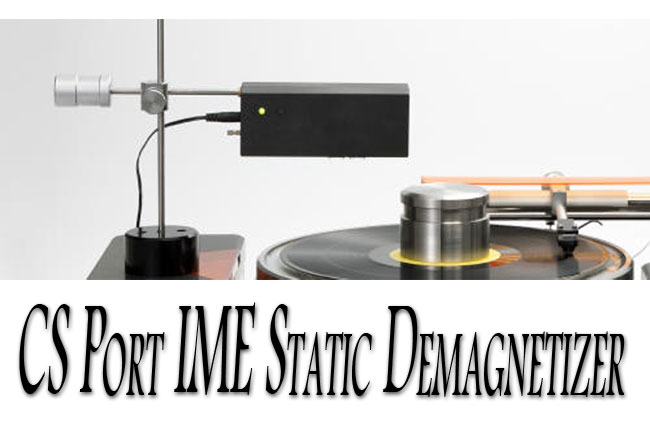
 “There is a highway bus as a cheap means, but I do not recommend it,” said Testuya Kato, who modestly described himself as the person ‘in charge of shipment’ for CS Port. Thus ended my hope of making a wallet-friendly detour to pay a physical site visit to this intriguing, low-profile boutique Japanese audio company.
“There is a highway bus as a cheap means, but I do not recommend it,” said Testuya Kato, who modestly described himself as the person ‘in charge of shipment’ for CS Port. Thus ended my hope of making a wallet-friendly detour to pay a physical site visit to this intriguing, low-profile boutique Japanese audio company.
Kato-san may very well be in charge of shipment, but I am sure that he is also in charge of other matters. For one, he was the one who extended me an invitation to visit his factory situated in Toyama city, in the eponymous Toyama Prefecture about 300km from Tokyo. Being located next to the Sea of Japan, and therefore blessed with the abundant riches from the water, Toyama has the freshest and most varied sea-based cuisine you can imagine. That alone would have been reason enough for me to visit. However, my trip to Japan in the spring of 2019 was tightly packed and did not allow me the luxury of including Toyama in the itinerary and listening to the delectable wares of CS Port. From what I can tell, CS Port designs and sells everything you need for your HiFi system, with the exception of loudspeakers. Its range of tubed amplification looks especially oishii to my eyes. I really regretted not being able to visit the factory.
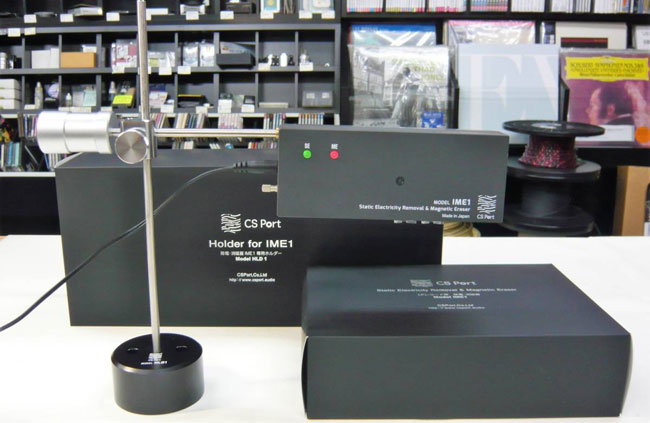
However, with its IME-1 Static Eliminator installed in its HLD-1 stand and on my main vinyl rig (Jean Nantais’ Lenco Reference with a 10” Graham Phantom II Supreme tonearm playing Fumihiko-san’s astounding Coralstone cartridge), I experienced anything but regret. No, scratch that. In fact, I did experience much regret. Regret that I had spent so many futile hours and so much money on accessories that promise to eliminate static from my records, but only managed to eliminate money from my pocket. You name it, I have tried it. Cloths, guns, blowers, sprays, magical chants, whatever. I have, as many wise men say, been there and done that.
Suffice it to say, my analog music is the quietest it’s ever been. The IME-1 continuously blows a stream of negative ions to remove static from the record surface as it is being played, something no other product manages to do. It renders crude all attempts from vintage products such as my Decca Record brush. Honestly, given a clean pressing, properly washed and treated, you would swear that you were listening to a perfect digital source. Those who have played with the Decca brush before would know that it uses electrically conductive bristles that contact the record grooves while traversing the record with a pivoted arm, the end of which is attached a drain wire that theoretically removes any static while the record is spinning. I say theoretically because there has been no shortage of times when I experience unpleasant static still clinging to a record when I pick it up after playing a side with the brush in action.
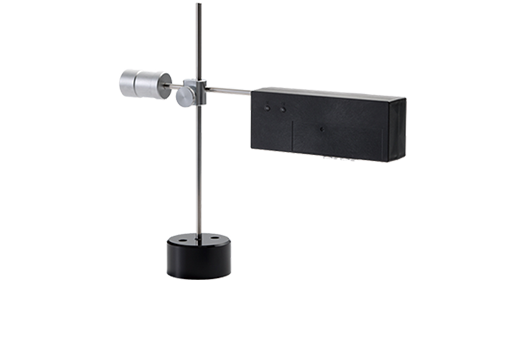
To say that the IME-1 is 10 times more effective than the Decca brush (or products of its ilk) is probably understating the case. For one, there has not been another record where residual static remained after being treated with the IME-1. Not a single one. After almost 10 months of constant use. I no longer fear static. This weapon, the CS Port IME-1, banishes static forever. You do not need me to run through specific instances of records or pressings with before-and-after comparisons. I don’t think it adds anything to my conclusion, which is, if you do not currently have an IME-1 in your system, and are suffering from the ill-effects of static on your vinyl playback, this is the product that may very well be the end of your woes.
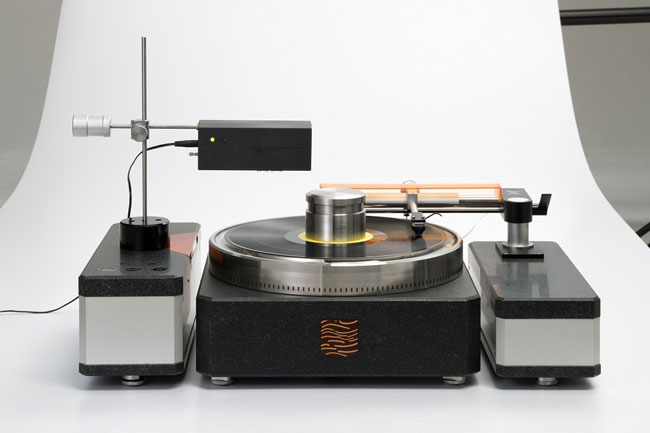
ERGONOMICS SCHMERGONOMICS
 Caveats? Of course, there are. I have not yet made mention of the HLD-1, its companion piece. To say that it is indispensable is, again, to understate the case. How the hell else is anyone supposed to raise the IME-1 aloft – at an angle to the edge of the record, no less – so that it can do its bidding? Sure, you can try to place it on a DIY stand, or maybe hang it from the ceiling, depending on your ingenuity. But I submit that the HLD-1 is an almost-perfect solution to this problem. It is a handsome contraption consisting of a heavy, rounded dense base of about yay (which is the scientific term for 4cm) high, in which a cross configuration of surgical steel tubes is embedded. The horizontal arm of this cross holds the IME-1 at one end, and a nice brushed finish balancing counterweight at the other. It is also adjustable for height with the help of a big knurled screw, so you should be able to fix it at the right height whichever turntable you’re using.
Caveats? Of course, there are. I have not yet made mention of the HLD-1, its companion piece. To say that it is indispensable is, again, to understate the case. How the hell else is anyone supposed to raise the IME-1 aloft – at an angle to the edge of the record, no less – so that it can do its bidding? Sure, you can try to place it on a DIY stand, or maybe hang it from the ceiling, depending on your ingenuity. But I submit that the HLD-1 is an almost-perfect solution to this problem. It is a handsome contraption consisting of a heavy, rounded dense base of about yay (which is the scientific term for 4cm) high, in which a cross configuration of surgical steel tubes is embedded. The horizontal arm of this cross holds the IME-1 at one end, and a nice brushed finish balancing counterweight at the other. It is also adjustable for height with the help of a big knurled screw, so you should be able to fix it at the right height whichever turntable you’re using.
I mentioned that it was “almost-perfect” because it isn’t perfect. The dense base is heavy but is not so heavy that you cannot tip the IME-1 over, which can spell disaster if it happens to land on one of your precious rare pressings. Care and patience is the order of the day. Besides this, HLD-1 also suffers from another ergonomic glitch: in order to swing IME-1 over the record for normal operation, you either swivel the entire combo on its base, or fix the base in place and swing only the horizontal arm. Problem with that is, the knurled screw that holds the horizontal arm in place will loosen quickly, and before you know it, the arm would start to slide downwards and inch the IME-1 ever closer to the record surface, again with the result you may accidentally scratch the record itself with the base of the IME-1. So, while it may not be the most elegant way to do things, my advice is to move the whole contraption together with the base, so long as care is taken not to let it tip over.
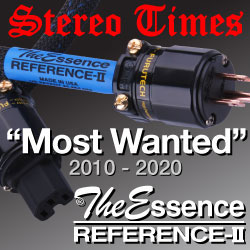 The IME-1 comes with another trick up its sleeve, which I’ve not mentioned thus far. It is able to demagnetize your records with a press of a button (marked “ME” for Magnetism Elimination?) next to the static removal button (marked “SE”). Pressing “ME” causes red light to appear, and a high-pitched whining sound that gradually dies away as the demagnetizing function does its thing. I used the ME function quite a bit at first, but later found that the ergonomic problem that plagues the swiveling of the IME-1 (above) also bedevils the demag function, but worse. Why? In order for the demag function to work properly, the IME-1 has to be much closer (about 10mm) to the record surface than compared with static elimination (about 8-10cm). This means it is necessary to find a way to lower the height of the IME-1 on the HLD-1, which typically means loosening the knurled screw and lowering the horizontal arm. But doing this is a pain, literally. The screw has to be set really tight in order to hold the IME-1 up, and this operation needs to be reversed when ME is done, in preparation for SE. This repeated loosening and tightening can be tedious and eventually, perhaps even strip the threads rendering the HLD-1 useless.
The IME-1 comes with another trick up its sleeve, which I’ve not mentioned thus far. It is able to demagnetize your records with a press of a button (marked “ME” for Magnetism Elimination?) next to the static removal button (marked “SE”). Pressing “ME” causes red light to appear, and a high-pitched whining sound that gradually dies away as the demagnetizing function does its thing. I used the ME function quite a bit at first, but later found that the ergonomic problem that plagues the swiveling of the IME-1 (above) also bedevils the demag function, but worse. Why? In order for the demag function to work properly, the IME-1 has to be much closer (about 10mm) to the record surface than compared with static elimination (about 8-10cm). This means it is necessary to find a way to lower the height of the IME-1 on the HLD-1, which typically means loosening the knurled screw and lowering the horizontal arm. But doing this is a pain, literally. The screw has to be set really tight in order to hold the IME-1 up, and this operation needs to be reversed when ME is done, in preparation for SE. This repeated loosening and tightening can be tedious and eventually, perhaps even strip the threads rendering the HLD-1 useless.
I went into a lot of painful detail on the ergonomics of the HLD-1 primarily because I think it is the weakest point of this particular static elimination solution. The IME-1 works like a charm, but only when one is willing to compromise and live with the less than ideal design of the HLD-1. Since I have the Furutech Demag unit, I find myself using the ME function very little anyway. If you do not have the Furutech, then you’ll need to find some way of working both functions on the IME-1 to your satisfaction.
The packaging for such an expensive and well-made product seemed a bit quotidian. All you get is a simple paper box, which does what it is supposed to do, which is to protect its occupants during the shipping process. You could argue that the boxes are useless once you have taken the IME-1 and HLD-1 out of them, and to spend any more money on such frivolities would be a shameful waste, and you would be right. However, there are box fetishists out there who would disagree. Actually, the Japanese themselves tend to be the world’s biggest box fetishists, so a mild surprise here.
A final point of note: there is a drain wire which connects from the IME-1 at one end, which you should attach to ground at the other. Quite how this works is a bit of a mystery to me. I asked Kato-san to explain the purpose of the ground wire, since the static elimination concept of the IME-1 is by way of neutralizing, not draining static electricity. Unfortunately, I did not receive an answer from him before I had to submit this article, but when I do, I will update the answer accordingly.
CONCLUSION
I would be mendacious if I claimed that every single tick and pop has now been removed from every record I play. Of course, they’re not. Ticks and pops are an inevitable by-product of the vinyl experience. But whatever is left of them, the IME-1 gives me the assurance that it’s because of other reasons besides static electricity on the record. I do continue to use a brush with drain wire (a much better design than the Decca brush) to remove any residual static. In combination with the IME-1, I can safely say that whatever noise I hear, it’s probably dirt, a scratch, or a congenital vinyl imperfection. I must also clarify that the IME-1 cannot work miracles on its own, as it takes an entire, obsessive vinyl care regime to get any record as quiet as possible. But when you’ve got everything right, and the stars align, don’t be surprised when you are rewarded with the quietest record playback you’ve ever heard.


Stephen Yan
Price:
IME 1 135,000 JPY (approx $1,250.00)
HLD 1 49, 500 JPY (approx $460)
|
Product Specifications |
|
|
Model |
IME1 |
|
Method |
Ion blow type static eliminator & damping type degausser configuration / main body & AC adapter |
|
Constitution |
Body and AC adapter |
|
Static eliminator |
Elimination method: ion blowing type |
|
Demagnetizer |
Degaussing method: Damping magnetic field equation |
|
Power supply |
DC12V 0.5A 100/240V |
|
Mounting method |
UNF 1/4 screw hole (camera mounting screw) |
|
Size |
155 W × 62 H × 43 D Convex part not included |
|
Weight |
320g |
|
Holder HLD 1 specification |
|
|
Model |
HLD1 |
|
Fixed target |
IME1 only |
|
Vertical movement amount |
220mm |
|
Left / right movement amount |
80mm |
|
Weight |
1.4kg |
Stereo Times Masthead
Publisher/Founder
Clement Perry
Editor
Dave Thomas
Senior Editors
Frank Alles, Mike Girardi, Russell Lichter, Terry London, Moreno Mitchell, Paul Szabady, Bill Wells, Mike Wright, and Stephen Yan,
Current Contributors
David Abramson, Tim Barrall, Dave Allison, Ron Cook, Lewis Dardick, John Hoffman, Dan Secula, Don Shaulis, Greg Simmons, Eric Teh, Greg Voth, Richard Willie, Ed Van Winkle, Rob Dockery, Richard Doron, and Daveed Turek
Site Management Clement Perry
Ad Designer: Martin Perry






Be the first to comment on: CS Port Static Demagnetizer